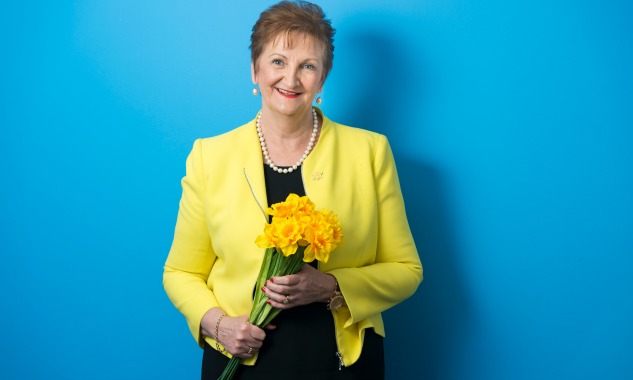Before I started as CEO of Cancer Council Australia, the national office of Australia’s largest cancer charity, I was very familiar with the Cancer Council, the collective noun for the office and its eight state and territory members.
Over my 37 years in cancer control I had used its services, worked on its information and support telephone line, raised money for its activities and engaged in joint projects with Cancer Council staff members.
Many of my graduate students were or became staff members of the council. Just the same, becoming CEO of the national office deepened my understanding of the challenges facing the organisation and others like it. Being the biggest and oldest cancer charity comes at a cost, and I want to focus on both the challenges and opportunities that size presents. While the council is a federation, I expect these challenges are common to most large national charities.
Challenge 1: Local versus national.
Many large charities start small as a local response to an identified need, offering community connectedness through simple decision-making processes. As charities grow, amalgamate and become complex organisations, it can become more challenging for them to respond to local pressures and opportunities. Also, acting locally can damage an organisation’s reputation if it is out of step with the collective, so how can a balance be achieved?
One way to manage this is the concept of freedom within a framework. This requires a collective agreement on purpose, mission-based messages, brand image and governance, while allowing local innovation and adaptation to needs. The Cancer Council’s major national fundraising campaigns now use this concept and deliver adaptable toolkits to support local implementation. This supports engagement with local media, volunteers and business partners. As we do more to develop and promote health-service policy that relates to the remits of state/territory governments, a similar framework may be needed to support our advocacy work.
Challenge 2: Differentiation as a charity in a crowded space.
The Cancer Council exists in a crowded cancer charity space that is growing every day. While our brand is well known, our contribution, reach and impact are less well understood. The comprehensive scope of our work can reduce cut-through. It is much easier for a charity raising money for brain cancer research to explain what it does than it is for the council, which works across cancer prevention, early detection, treatment, support, advocacy, policy and research for all cancers and in all states and territories. Demonstrating and communicating the impact of our work is increasingly urgent. Donors are more discerning than ever and want to see how their investment in our work adds value.
Challenge 3: Agile decision-making.
Being large and complex often leads to structures built around consensus approaches to making decisions. There are two consequences: slow decisions or, worse, inertia and an inability to seize opportunities.
Establishing clear accountabilities for decisions can support agile responses. Having a clear point of decision-making is critical to success. Large charities must make decision processes and accountabilities explicit, which often requires careful negotiation as individuals feel their control has been removed.
In contrast to these challenges, being large also provides opportunities. This is true for single organisations and for alliances between organisations with a common purpose.
Opportunity 1: The power of your voice to influence
Size, scale and comprehensiveness, for instance the fact the Cancer Council works across the entire cancer-control spectrum, is a significant advantage when seeking to influence others. This may include encouraging the government to support policy recommendations, convincing communities to adopt a cancer-smart lifestyle or compelling professionals to implement best-practice healthcare.
The Cancer Council’s capacity to mobilise the collective talent of its members to generate evidence-based policy means it has become a trusted voice for government at national and jurisdictional levels, and for the wider community. This power entails fundamental adherence to evidence. The council’s role in supporting the government to develop a policy agenda around the National Bowel Cancer Screening Program is a case in point. We were able to mobilise our research community to independently model the clinical and economic benefit – a point openly made by the government when allocating $96 million, in a budget focused on savings, to support our recommendations.
As an independent voice, the council can also speak out when implementation stalls, or call for increased investment in public awareness.
Opportunity 2: The potential for leadership through partnerships
Alliances between charities are a further opportunity to increase the impact of our work. The Cancer Council has partnered with other NFP organisations to form the Australian Chronic Disease Prevention Alliance with the aim of raising the impact of calls on government to reduce the disease burden of obesity. There is power in a united voice in calls for action. The real test is how competing charities – in our case the 300-odd charities related to cancer – can work in partnership to achieve a collective goal rather than compete and realise a smaller overall impact.
Partnerships with corporate organisations are also an underdeveloped opportunity in Australia. Internationally there is a trend away from corporate giving toward partnerships that support shared-value creation. Corporate partners are looking to use their dollars to not only support our charity but also to elevate their brand through social impact.
Opportunity 3: Strengthening our impact, and communicating it
Together these opportunities speak to the imperative to use donor investment to make the biggest impact possible on the Australian community. This imperative will demand new ways to develop our priorities – a shift away from the ideological toward a practical decision-making approach that sees us invest even more in the initiatives that make the greatest difference. We will need to assess our research investment not only in terms of its scientific merit (peer review, publications and so on) but also in terms of whether it is addressing the biggest problems and leading toward new interventions with even more potential to make a difference.
For the Cancer Council, this is being shaped through a new research approach that models existing and emerging evidence across the trajectory of cancer control from prevention through diagnosis and treatment to create a menu of best buys for investment.
The role of the charity sector has never been more important as we experience widening inequities, rising healthcare and social costs, and an ageing population. Large charities have the potential to make the biggest impact with these issues but face considerable challenges because of the growth in the number of charities. There is much to do, and perhaps partnerships aligned toward a common agenda will ultimately make the difference.
Professor Sanchia Aranda, CEO, Cancer Council Australia.
This article originally appeared in Third Sector’s December print magazine- click here for more information.
























































































































































